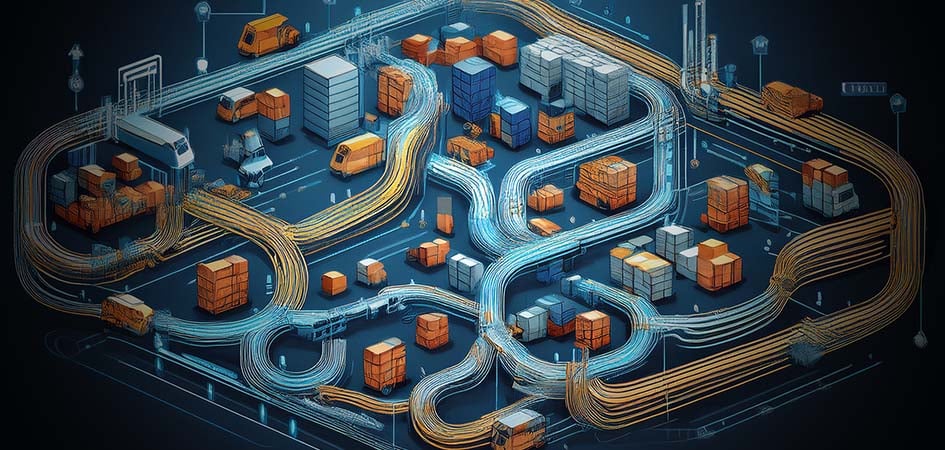How to Safeguard Critical Assets from the Growing Threat of Supply Chain Cyberattacks

Trustwave Research Reveals Cybersecurity Risks Threatening Patient Lives in Healthcare. Learn More
Get access to immediate incident response assistance.
Get access to immediate incident response assistance.
Trustwave Research Reveals Cybersecurity Risks Threatening Patient Lives in Healthcare. Learn More

Organizations must develop robust programs to manage supply chain risks, both known and unknown, while prioritizing their most critical assets. Often referred to as the "crown jewels", these assets are the most valuable and vital to business success.
Supply chain attacks exploit vulnerabilities in the network of suppliers, distributors, and other third-party partners to gain unauthorized access to sensitive data and systems.
The complexity and opacity of modern supply chains leave businesses exposed to significant risks, ranging from operational disruptions to data breaches. Including supply chain security as a key component of an organization's overall security strategy is crucial. This ensures that the most important parts of the organization are protected, supporting the enterprise’s long-term stability and success.
Supply chain attacks often target weaker links within an organization's supply network. In software supply chains, for example, attackers can compromise software distributed by a legitimate vendor, affecting end users of that software. A prominent example is the SolarWinds attack discovered in December 2020, where malicious code was inserted into the company’s software updates, impacting thousands of customers, including government agencies and large corporations.
The nature and methods of supply chain attacks are constantly evolving and becoming more sophisticated. As attackers innovate, their infiltration techniques become more accessible, lowering the barriers for potential attackers to execute such operations. The increasing prevalence of malicious packages in open-source software repositories has made it easier for attackers to exploit vulnerabilities in widely used software components. This trend is exacerbated by the growing reliance on open-source software, which, while fostering innovation and collaboration, also introduces new risks.
Organizations face significant concentration risks within their supply chains, particularly in extended networks that include fourth-party and systemic dependencies. These risks are particularly concerning in sectors critical to national infrastructure, such as healthcare, telecommunications, financial services, transportation, and energy. A breach in a single supplier can have far-reaching consequences, jeopardizing operational resilience and systemic stability. Therefore, it is crucial for organizations to gain visibility into their entire supply chain and collaborate with industry peers and regulators to mitigate these risks.
State-sponsored cyberattacks have become a formidable threat, capable of destabilizing industries and entire economies. These actors, backed by national interests, deploy increasingly advanced tactics, extending beyond critical infrastructure to exploit human vulnerabilities through social engineering. Given the current global geopolitical climate, these attacks are likely to escalate.
For instance, in 2020, the Australian Cyber Security Centre (ACSC) responded to a series of state-sponsored cyber activities targeting Australian institutions. These attacks focused on government agencies, industry, political organizations, educational institutions, healthcare services, essential service providers, and other critical infrastructure operators. The ACSC identified tactics such as spear-phishing to exploit human vulnerabilities and the deployment of sophisticated malware to infiltrate systems.
To combat these evolving threats and protect their supply chains, organizations must:
The security of supply chains is a complex issue that requires concerted efforts from all stakeholders. By understanding the latest trends and threats, and implementing best practices for supply chain security, organizations can better protect themselves against the potentially devastating impacts of a breach.
Craig Searle is Director, Consulting & Professional Services in Pacific at Trustwave with over 15 years of experience in the security industry working in the finance, government, telecom and infrastructure sectors. Follow Craig on LinkedIn.
Trustwave is a globally recognized cybersecurity leader that reduces cyber risk and fortifies organizations against disruptive and damaging cyber threats. Our comprehensive offensive and defensive cybersecurity portfolio detects what others cannot, responds with greater speed and effectiveness, optimizes client investment, and improves security resilience. Learn more about us.
Copyright © 2025 Trustwave Holdings, Inc. All rights reserved.